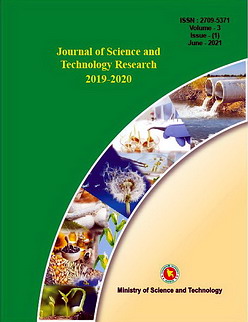Optimal Control Strategy to Reduce the Infection of the Pandemic HIV Associated with Tuberculosis in Bangladesh
DOI:
https://doi.org/10.3329/jscitr.v3i1.62812Keywords:
Mathematical model; HIV-TB co-infection; Compartmental transmission; Contagious; Optimal control; Numerical analysisAbstract
Tuberculosis (TB) associates with HIV/AIDS at any stage of the total infection period. In recent years, HIV and TB have become the leading causes of death due to infectious and long lasting disease. On the basis of the characteristics of disease transmission of HIV and TB, we formulate a mathematical model. The model consists of ten compartments with nonlinear ordinary differential equations. The model is locally asymptotically stable in case of disease free equilibrium point when basic reproduction number is less than unity and locally asymptotically stable in case of endemic equilibrium point when the basic reproduction number is greater than unity. We apply optimal control theory to the co-infection model in the form of Pontryagin’s Maximum Principle by introducing the treatment control and the vaccination control to decrease the transmission of the disease burden. Finally, we perform the numerical simulations of the optimal control model to observe the dynamics of the system in support of analytical findings.
J. of Sci. and Tech. Res. 3(1): 103-114, 2021
107
169
Downloads
Published
How to Cite
Issue
Section
License
Copyright (c) 2021 MHA Biswas, SA Samad

This work is licensed under a Creative Commons Attribution 4.0 International License.




